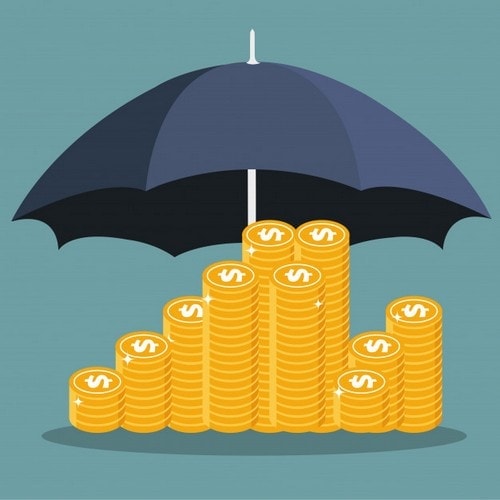Business risk is a possible hurdle which may prevent the business from achieving its ultimate goal. The risk can also prevent businesses from achieving regular goals as well. While certain risks are in your control while others are out of your control such as a risk of the global economy. Every business involves certain risks and without risk, business is not possible.
Therefore, it is desirable to bring down the risks to have the lowest possible rather than eliminate it entirely which is practically impossible. There is no such thing as zero risks but there is a thing which is a risk tolerance which measures the ability of your business to tolerate the risk. There are different types of business risks depending on different areas of business.
Table of Contents
13 Types of Business Risks
1) Competitive Risk :
These types of Business risks are very common in the market since competition is present in almost every industry. Competitive risk is the advantage that competitors may gain over you by achieving the target. A decrease in market share is also a kind of competitive risk because that means other competitors are gaining the market share.
2) Economic Risk :
The risk associated with the economy is termed as an economic risk. The possibility of economic slow down or economic changes on the global level is also associated with economic risk. Industry slowdown, drastic measures from the government is also part of the economic risk.
3) Operational Risk :
The possibility of failures in the day-to-day operations of an organization is called operational risk. Any failure in any process is associated with operational risks such as customer service process error, internal process error or the operational failure of the supply chain or mismanagement of inventory is also associated with operational risk. Operational risks are present at every step of all the processes and even after completion of the process that is a risk of operational failure.
4) Compliance Risk :
There is always a possibility that when performing a certain task, the laws of the tsar and may be overruled. While following the processes of the organization many times the compliance may be put at risk. It is very important that organization prevent itself from running into compliance risk because this may have long-term bad effects on the organization.
5) Strategy Risk :
A risk related to a particular strategy is called as strategy risk. These types of risks are common with your products and new industries. Even the new company runs at the risk of strategy execution. The latest strategy is not executed properly it poses a threat to the entire organization.
For example, Cadburys to correct with the new product silk. The product did not successfully run in the market owing to its gooey nature and improper advertising. This is the reason why Cadbury silk did not do well in the market.
6) Reputational Risk :
Every organization runs at the risk of the reputation. The declining reputation may cause long-term losses for the organization. The causes for reputation decline can be a product failure, product non-compliance or a general dissatisfaction from the entire customer base. The customers blame the product and the company which causes the organization to lose its reputation.
For example, The Tylenol incident of Johnson and Johnson caused a big reputation risk for the organization. However, the company managed it very well by pulling all the Tylenol batches back and issuing an apology.
7) Project Risk :
Undertaking a new project is always risky for an organization. A turnkey project, for example, poses risk for the organization. While a successful turnkey project would always be welcome, there is always a possibility of failure. The success of the project could mean a lot in terms of money as well as reputational preferences. Does every new project run with these types of business risk which is project risk?
8) Innovation Risk :
Developing a new product requires a lot of investment in research and development department. However, the innovation runs at risk because the product may or may not work in the market. It is not necessary that every innovative product should work in the market at the right time. The important thing is even the market should be ready to accept the product.
For example, before Apple had launched full touchscreen phones Nokia and few other companies had tried launch touchscreen phones without keypad but since they will not popular enough the customers did not accept them however when the same concept was brought in my apple it worked wonders for the company.
9) Quality Risk :
Product quality is a very essential parameter for the success or failure of the product. A good quality product even though expensive will always find customers while a bad quality product, however cheap, will not sustain in the long run. It so happens that even after a product is developed at a certain quality, the standard may not be compliant enough in the long run which risks the quality of the product and puts it ar quality risk.
10) Credit Risk :
The sure to pay money to the person you owe is called credit risk. As much as the surprising financials of the company this also applies to the products of the company that are taken from distributors. If the customer is unable to make the payment of for the products, he runs at credit risk and if the product sales have gone down and the customer does not return the product, he again runs at credit risk.
11) Political Risk :
Every organization runs at political risk. The political situation may cause a disruption in the company for a long term which may modify or permanently change a part of the entire organization. These political factors are external and cannot be controlled by anybody. For example, in 2017, there was demonetization carried out in India which affected a lot of factors.
Since the cashless economy was being propelled in the market multiple applications which provided the facility of cashless nature were drastically increased. Since then these have gained popularity in the Indian subcontinent. Thus, every organization runs at political risk.
12) Seasonal risk :
Most of the products and services run on a seasonal basis. During the season the sales pick up all during of season they have to push this is numbers. For example, during January of every year gym memberships rise by a substantial percentage. These are few of the factors which are out of control and since these cannot be controlled organizations, try to push the sales even in non-peak seasons to make it an even business for them all throughout the year.
13)Financial risk :
This is the most important risk of all types of Business risks. The financial risk is not only for the organization but also for the investors that seek a return on investment. Depending on the nature of the organization, industry growth and product quality, financial risk can be assessed.
Banks while issuing loans also have a financial risk factor which they take into consideration. It is crucial that the products of the company perform in the market and get sales which will bring revenue to the organization and profits for investors. The better the sales, the lower is the financial risk. But there are always unforeseen circumstances like economic slowdown or depression or inflation or war when the financial risk runs higher.
Liked this post? Check out the complete series on Risk Management




you have written your material in a very simple and clear manner for the reader to understand without difficulty. thank you very much